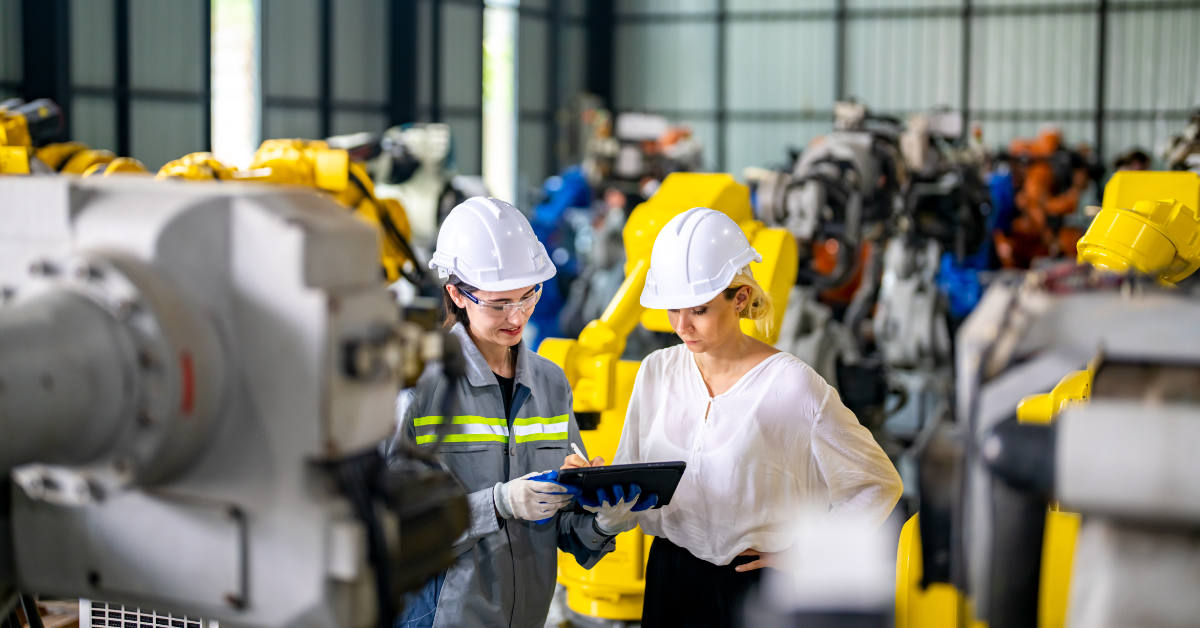After much talk about the fourth industrial revolution, references to Industry 5.0 are beginning to appear in the media. But what is it all about? Let us find out what is going to change, and what the main challenge will be: the ability to adapt to a new business concept.
The European Commission recently reaffirmed that industry is a key driver in the economic and social transitions we are experiencing, but to maintain this role, it must be able to adapt both to the digital transition and to the growing need for sustainability.
This new approach offers a vision of industry going beyond efficiency and productivity as the only goals, strengthening its contribution to the general well-being. In other words, at the centre of the production process it no longer (or not only) places profit but the worker, using new technologies to provide prosperity for society as a whole, beyond economic growth, while respecting the planet’s resources and their limits. In this framework, research and innovation are put at the service of the transition to a sustainable, anthropocentric and resilient industry.
While, for many companies, Industry 4.0 is still a goal to be achieved or a trend they are aiming at, a new revolution is already on its way. But what does Industry 5.0 mean, and what are its implications for current and future business strategies?
Operators and machines work side by side
In an Industry 5.0 environment, humans and machines work together improving the efficiency of industrial production.
In particular, increasingly collaborative robots help operators work better and faster by exploiting advanced technologies, adding a human touch to the pillars of automation and effi ciency to which Industry 4.0 has accustomed us. Thanks to customisation and the use of cobots, workers are free to carry out new value-added tasks. For example, instead of being fenced in for safety reasons, new generation cobots can work safely alongside people, creating new opportunities for companies. In fact, operators and machines working side by side allow people to focus on value-added processes, taking the customisation of products and services to a new level.
The new phase is made possible by developments in IT which include aspects such as: Artificial Intelligence, automation, big data analysis, IoT, machine learning, robotics, intelligent systems and virtualisation.
Focusing on the well-being of workers and on sustainability
Expanding on the concepts of Industry 4.0, Industry 5.0 is described by the European Union as “a vision of industry aiming beyond efficiency and productivity as the only goals, and enhancing industry’s role and contribution to society”. This is an important distinction from the Industry 4.0 approach, as it “places the well-being of the worker at the heart of the production process, and uses new technologies to deliver prosperity beyond jobs and growth, while respecting the productive limits of the planet”.
This is therefore a shift from a focus on economic value to a broader concept of social value and well-being. Although this concept has been touched upon in the past, for example through corporate social responsibility (CSR), the idea of putting people and the planet before profits creates a new focus for industry. However, the idea of Industry 5.0 goes beyond industry to encompass all organisations and business strategies, to create a broader perspective than that seen with Industry 4.0.
What are the pros and cons?
Technologies supporting the Industry 5.0 concept include particularly: anthropocentric solutions and human-machine interaction technologies to interconnect and combine the strengths of operators and machines; recyclable materials with integrated sensors and advanced functionalities; digital twins and real-time simulations; secure data transmission, storage and analysis technologies; Artificial Intelligence; energy efficiency and reliable autonomy technologies.
The main benefit of Industry 5.0 is the creation of higher content jobs, offering greater customisation for clients and greater design freedom for workers. By enabling the management of production processes through automation, workers are able to spend more time on the delivery of improved and tailor-made services and products.
This was already happening to some extent with Industry 4.0, but Industry 5.0 pushes it further through improved automation and feedback. The goal is to create a service-based model in which humans are able to focus on adding value for end users. At the same time, the increased focus on sustainability and resilience means that companies become more agile and flexible, also having a positive impact on society, rather than just mitigating any negative effects. It is difficult to see all the drawbacks of Industry 5.0 today, but the challenge will lie in how companies will be able to adapt to embrace this new concept. Indeed, the future will be bright for companies able to become more anthropocentric, resilient and sustainable.
Another step forward
In summary, Industry 5.0 is fast approaching and will, once again, transform the way goods are produced. With advanced technologies such as artificial intelligence, robotics (or cobotics) and IoT, the next phase of industrial development promises to be more efficient, sustainable and human-centred than ever before. The term Industry 5.0 therefore describes the next phase of the industrial revolution, which focuses on the relationship between humans and machines in the manufacturing industry. It is a concept based on the progress of Industry 4.0, which emphasised the integration of robotic systems, IoT and Big Data analysis to improve manufacturing processes. Industry 5.0 takes this a step further by emphasising the importance of human involvement and interaction in manufacturing processes.
Source: Controllo e Misura by Publitec


